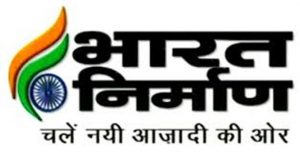Bharat Nirman is a time-bound business plan for action in rural infrastructureThe basic geographical structure of population distribution will change once India shifts from being agriculture based country to industry based nation. The Government has launched “Bharat Nirman” for the development of rural infrastructure. Plans proposed for the development of India Rural Infrastructure are –
- Irrigation,
- Roads,
- Housing,
- Water Supply,
- Electrification,
- Telecommunication Connectivity.
The main thrust of research and development (R&D) in the roads sector is to build a sustainable road infrastructure comparable to the best roads in the world. The various components of this strategy are improvement
in design, modernization of construction techniques, introduction of improved material conforming to latest trends, evolving better and appropriate specifications, encouraging development and use of new technologies etc. The dissemination of these matters is done through the publication of new guidelines, code of practices, instructions/circulars, compilation of state-of-the-art reports and seminars/presentations etc. The research schemes sponsored by the Department are generally ‘applied’ in nature, which, once completed, would enable them to be adopted by user agencies/departments in their work in the field. The areas covered are roads, road transport, bridges, traffic and transportation techniques etc. The Department takes the help of various research institutions, academic institutions and universities to implement the schemes.
Irrigartion
Under the Irrigation Component of Bharat Nirman, the target of creation of additional irrigation potential is planned to be met largely through expeditious completion of identified ongoing major and medium irrigation projects. Irrigation potential of is planned to be created by expeditiously completing such ongoing major and medium projects.
There is a definite gap between irrigation potential created and the potential utilized. Under Bharat Nirman it is planned to restore and utilize irrigation potential of 10 lakh hectare through implementation of extension, renovation and modernization of schemes alongwith command area development and water management practices.
There are considerable areas in the country with unutilised ground water resources. Irrigation potential of 28 lakh hectare is planned to be created through ground water development.
The remaining target for creation of irrigation potential of 10 lakh hectare is planned to be created by way of minor irrigation schemes using surface flow.
10 lakh hectare of irrigation potential is also planned by way of repair, renovation and restoration of water bodies and extension, renovation and modernization of minor irrigation schemes.
Roads:
- Development of GIS based National Highways information system;
- Guidelines for soil nailing techniques in highway engineering;
- Pilot study on effect of overloading on road infrastructure;
- Investigation on field performance of bituminous mixes with modified binders;
- R&D Studies on performance evaluation of rigid pavements on high density traffic corridors using instrumentation supported by laboratory tests.
Mahatma Gandhi National Rural Employment Guarantee Act (MGNREGA):
- Mahatma Gandhi National Rural Employment Guarantee Act, aiming at ensuring 100 days’ guaranteed employment for every rural household in a financial year – has put a major emphasis on creation of durable community assets as well as social and economic infrastructure in rural areas.
- Since its inception, in September 2005, the program has been instrumental in enhancement of rural livelihood opportunities on a sustained basis, by developing need-based rural infrastructures
Main features of selection of work under MGNREGA are:-
- All works shall be approved by the Gram Sabha and the Gram Panchayat and shall be part ofthe Annual Shelf of Projects.
- The unit costs included in the works below are indicative and project costs for each work willbe estimated depending on the Schedule of Rates (SoR’s) prevalent in the respective region/areaof work.
- All activities shall be allowed on land or homestead owned by households belonging tothe Scheduled Castes and Scheduled Tribes or below poverty line families or the beneficiariesof land reforms or the beneficiaries under the Indira Awas Yojana of the Government of India orthat of the small or marginal farmers as defined in the Agriculture Debt Waiver and Debt ReliefScheme, 2008, or the beneficiaries under the Scheduled Tribes and Other Traditional ForestDwellers (Recognition of Forest Rights) Act, 2006 (2 of 2007) .
- For works to be taken up on private land and homestead, the individual land owner shall be ajob card holder and also work in the project.
- It should be ensured that the total material cost (including wages of skilled and semi-skilledworkers) of all works in the Annual Shelf of Projects (including the works suggested under ParaIC of Schedule I taken up in a Gram Panchayat, in a Financial Year, should not exceed 40 %
- Only those components of admissible works that lead to creation of durable assets may be takenup under MGNREGA. Items of expenditure that are recurring in nature and/or do not lead tocreation of durable assets, are not permitted under MGNREGA
CGPCS Notes brings Prelims and Mains programs for CGPCS Prelims and CGPCS Mains Exam preparation. Various Programs initiated by CGPCS Notes are as follows:-